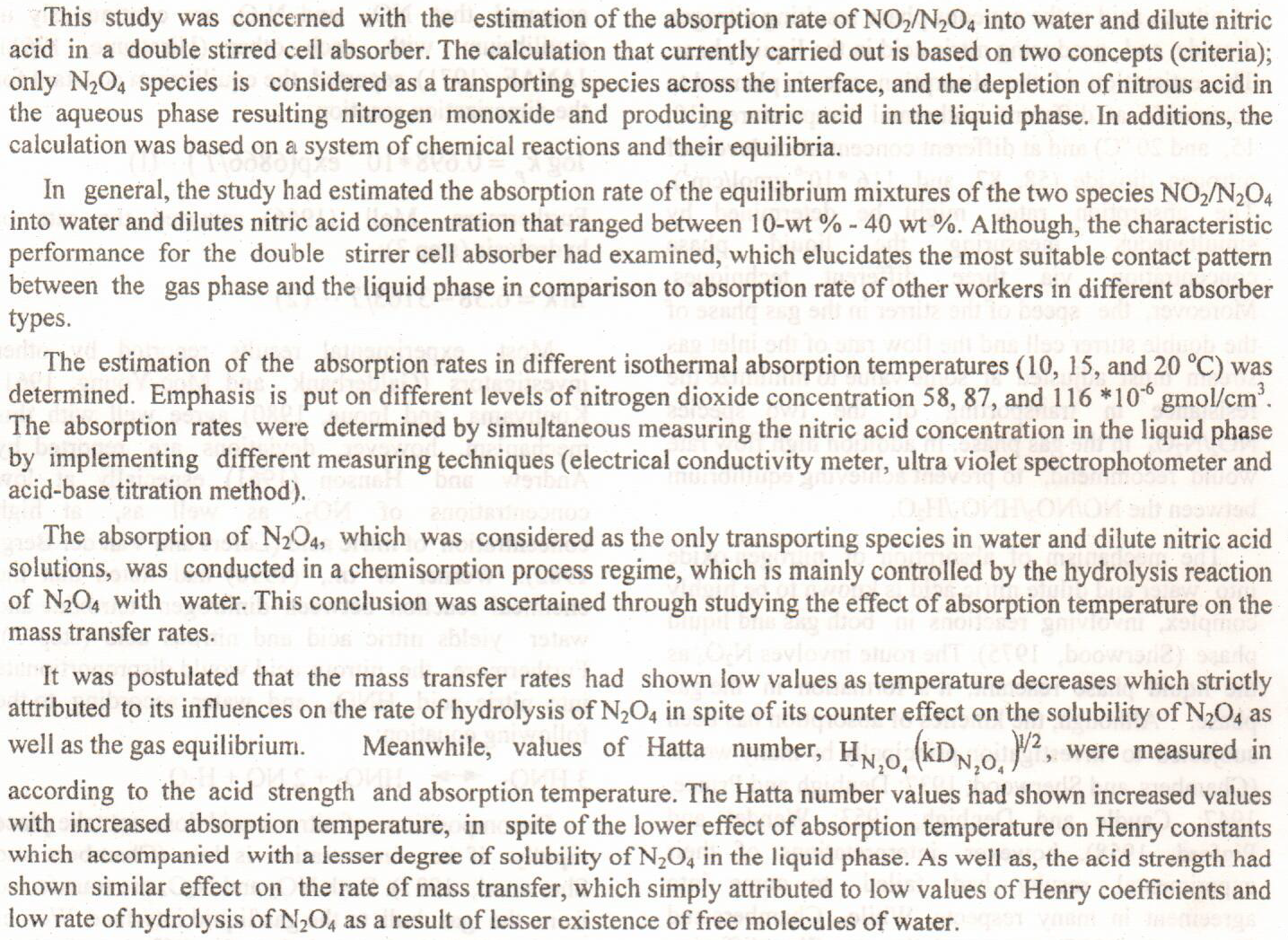
Investigation of the adsorption of acid fuchsin dye (AFD) on Zeolite 5A is carried out using batch scale experiments according to statistical design. Adsorption isotherms, kinetics and thermodynamics were demonstrated. Results showed that the maximum removal efficiency was using zeolite at a temperature of 93.68751 mg/g. Experimental data was found to fit the Langmuir isotherm and pseudo second order kinetics with maximum removal of about 95%. Thermodynamic analysis showed an endothermic adsorption. Optimization was made for the most affecting operating variables and a model equation for the predicted efficiency was suggested.
A mercury porosimeter has been used to measure the intrusion volume of the three types mercury positive lead acid-battery plates. The intrusion volumes were used to calculate the pore diameter, pore volume, pore area, and pore size distribution. The variation of the pore area in positive lead acid-battery plates as well as of the pore volume has the following sequence. Paste positive > Uncured positive > Cured positive
A mercury porosimeter has been used to measure the intrusion volume of the three types mercury positive lead acid-battery plates. The intrusion volumes were used to calculate the pore diameter, pore volume, pore area, and pore size distribution. The variation of the pore area in positive lead acid-battery plates as well as of the pore volume has the following sequence. Paste positive > Uncured positive > Cured positive
The aim of the study was to investigate the effect of magnetized water on the histological structure of heart, lung and spleen. For this purpose, twenty five albino rats were divided into five equal groups, the first group was considered as control group. The other groups were given magnetized water with intensity of 250, 750, 1000, 1500 gause every day for 30 days. Then the animals were sacrificed and the histological change on heart, lung and spleen was studied. Histopathology of heart in rats treated with magnetic water with intensity of 250, 750, 1000, 1500 gause showed no clear pathological lesion. Lung section of rats treated with 250 gause of magnetic water showed no pathological lesion, while lung section belongs to rats group given
... Show More (3)
(3)
 (4)
(4)
KE Sharquie, AA Noaimi, ZN Al-Khafaji…, Journal of Cosmetics, Dermatological Sciences and Applications, 2016 - Cited by 2
In this work, a method for the simultaneous spectrophotometric determination of zinc which was precipitated into deionized water that is in a commercial distribution systems PVC pipe, is proposed using UV-VIS Spectrophotometer. The method based on the reaction between the analytes Zn2+ and 2-carboxy-2-hyroxy-5-sulfoformazylbenze (Zincon) at an absorption maximum of 620nm at pH 9-10. This ligand is selective reagent. Since the complex is colored (blue), its stoichiometry can be established using visible spectrometry to measure the absorbance of solutions of known composition. The stoichiometry of the complex was determined by Job’s method and molar ratio method and found to be 1:2 (M: L). A series of synthetic solution containing different
... Show More (20)
(20)
 (15)
(15)

